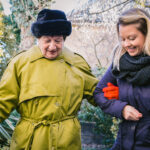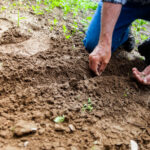Arthritis nodules are lumps that develop in people with certain types of arthritis. These firm bumps most often appear around joints – particularly the fingers, elbows, knees, or heels – and can be concerning when first noticed. Arthritis nodules are rarely dangerous and can be managed as part of your ongoing arthritis care.
The type of nodule depends on which form of arthritis you have. Most commonly, these lumps are linked to osteoarthritis or rheumatoid arthritis. Understanding the difference helps clarify what symptoms to expect and whether treatment is needed.
Key insights
- Arthritis nodules are most commonly linked to osteoarthritis and rheumatoid arthritis
- Most nodules are harmless but may cause stiffness, pain, or cosmetic concerns
- Treatment is usually unnecessary unless nodules interfere with movement or become infected
- Any new, painful, or changing lump near a joint should be assessed by a healthcare professional
Types of arthritis nodules
There are two main types of arthritis nodules, each associated with a different condition.
What are Heberden’s nodes?
Heberden’s nodes are hard, bony lumps that form on the joints at the tips of your fingers. They develop in people with osteoarthritis, usually after many years of joint wear and tear.
In healthy joints, cartilage cushions the ends of the bones and allows smooth movement without pain. Osteoarthritis occurs when this cartilage gradually breaks down. As the bones begin to rub against one another, your body attempts to repair the damage by forming new bone. Sometimes this new bone grows unevenly, creating visible nodules that protrude from the joint.
Symptoms of Heberden’s nodes
Heberden’s nodes typically develop in more advanced osteoarthritis and may cause:
- Joint stiffness and reduced range of motion
- Aching pain during use
- Swelling around the affected joint
- Visible joint enlargement
Risk factors of Heberden’s nodes
Women develop Heberden’s nodes more often than men. Genetics also plays a role – the condition can run in families. Excess body weight may further increase joint strain, particularly in weight-bearing joints like the knees and hips.
Treatment options
There’s no cure for Heberden’s nodes. Treatment focuses on managing pain, maintaining joint mobility, and slowing further joint damage. This may include gentle exercise, weight management, pain relief medication, and joint protection strategies. Surgery may be considered in rare cases where pain or deformity severely affects hand function.
What are rheumatoid arthritis nodules?
Rheumatoid arthritis nodules are firm lumps made of inflammatory tissue. They affect around 20–25% of people living with rheumatoid arthritis and typically appear over pressure points – the fingers, elbows, forearms, knees, or the backs of the heels.
Although rheumatoid nodules can look uncomfortable, most are painless and not tender to the touch. In rare cases, nodules may form internally, including in the lungs, eyes, or vocal cords.
What causes rheumatoid nodules?
Rheumatoid nodules are linked to immune system activity rather than direct joint damage. Risk factors include smoking, being rheumatoid factor positive, being CCP positive, and having certain inflammatory blood vessel or lung conditions.
The inflammation that causes these nodules differs from joint inflammation. This means disease-modifying treatments used for rheumatoid arthritis don’t always reduce nodule size.
Size and appearance
Rheumatoid nodules vary in size, ranging from small, pea-sized lumps to larger masses. Some may change in size over time or appear to move slightly beneath the skin. As treatments for rheumatoid arthritis have improved, nodules have become less common, though small micro-nodules can still develop.
Are arthritis nodules serious?
Most arthritis nodules are not serious and don’t cause long-term harm. Many people live with them without needing treatment. Problems can arise if a nodule is exposed to repeated pressure or friction, which may lead to ulceration, infection, or discomfort that interferes with movement.
People who spend long periods in one position, such as those who are bedridden, may be at higher risk of complications due to constant pressure on certain joints.
You should seek medical advice if a nodule becomes painful, red, broken, infected, or changes rapidly in size.
Treatment options for arthritis nodules
Many arthritis nodules don’t require treatment and can simply be monitored. When treatment is needed, options depend on the type of arthritis and the symptoms involved.
Treatment may include:
- Pain relief or anti-inflammatory medication
- Steroid injections to reduce nodule size
- Adjustments to existing arthritis medication
- Surgical removal if the nodules are repeatedly infected or exposed to ongoing trauma
Any treatment decisions should be made in consultation with a healthcare professional.
Living well with arthritis
Arthritis is a long-term condition that affects both physical comfort and emotional well-being. Managing symptoms, staying active within safe limits, and accessing the right support help maintain quality of life.
For family members supporting someone with arthritis, the role can be rewarding but demanding. Looking after your own well-being is equally important, and having the right help in place makes a meaningful difference.
Hometouch helps families find experienced, self-employed carers who provide personalised support for people living with long-term conditions, including arthritis.
Medical review and accuracy
This article is intended for general information and doesn’t replace professional medical advice. It reflects current clinical understanding of osteoarthritis nodules and rheumatoid arthritis nodules and aligns with guidance commonly used in UK healthcare settings.
Symptoms, causes, and treatment options vary between individuals. Always speak to a GP, rheumatologist, or other qualified healthcare professional for advice specific to your situation.
Frequently asked questions
What do arthritis nodules look like?
They usually appear as firm lumps near joints, most commonly on the fingers, elbows, knees, or heels.
Are arthritis nodules cancerous?
No. Arthritis nodules are not cancerous and don’t increase the risk of cancer.
Can arthritis nodules go away?
Some nodules may shrink or change over time, particularly with improved arthritis management; however, many remain stable in the long term.
Do arthritis nodules mean arthritis is getting worse?
Not always. While some nodules are linked to more advanced disease, others can develop even when symptoms are otherwise well controlled.
When should I see a doctor about a nodule?
You should seek medical advice if a nodule becomes painful, infected, ulcerated, or changes rapidly in size.




